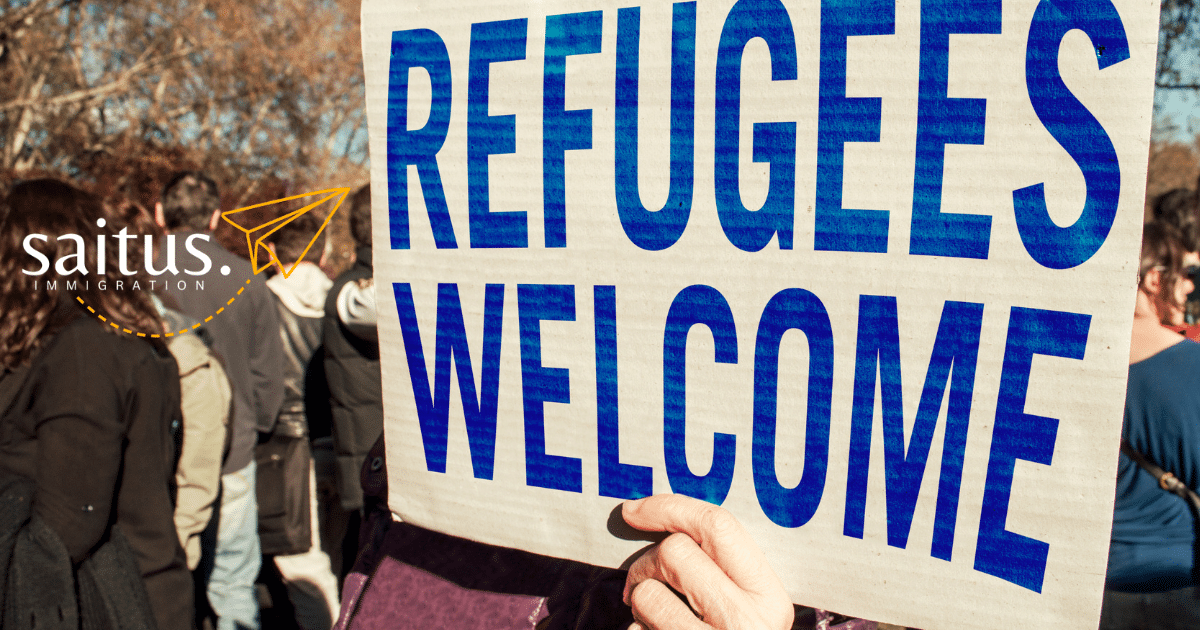I am sure you’ve also been reading (like I have) through all the posts on the social media platforms and listening to all the news channels for a bit of information on the “refugees” that arrived in the United States from South Africa. Unfortunately, the only thing that stood out to me was all the negativity surrounding the subject.
On May 12, 2025, the United States welcomed 49 white South African Afrikaners as refugees, marking a significant and controversial development in U.S. immigration policy. This move, initiated by President Donald Trump’s administration, has sparked widespread debate both domestically and internationally.(The Washington Post)
Background and Justification
President Trump issued an executive order in February 2025, citing alleged racial discrimination and violence against white farmers in South Africa as the basis for granting refugee status to Afrikaners. He described the situation as “genocide,” referencing South Africa’s Expropriation Act of 2024, which allows for land seizures without compensation. However, South African officials have refuted these claims, stating that no land seizures have occurred under the law and that crime affects all citizens regardless of race. (Politico, New York Post)
Arrival and Resettlement
The group of 49 Afrikaners arrived at Dulles International Airport in Virginia on a U.S. government-chartered flight. Upon arrival, they were greeted by Deputy Secretary of State Christopher Landau and Deputy Homeland Security Secretary Troy Edgar. The refugees are set to be resettled in various states, including Minnesota, Nevada, and Idaho. (NPR, NPR)
The expedited processing of these refugees completed in approximately three months is notable, especially given that the broader U.S. refugee resettlement program remains largely suspended for other groups. (Anchorage Daily News)

Domestic and International Reactions
The decision has been met with criticism from various quarters. In the U.S., refugee advocacy groups and political opponents argue that prioritizing white South African refugees over individuals from conflict zones undermines established refugee vetting protocols. The Episcopal Church announced it would not assist in resettling these individuals, citing a commitment to racial justice. (Reuters, Politico, The Guardian)
Internationally, South African President Cyril Ramaphosa and Foreign Minister Ronald Lamola dismissed the U.S. administration’s claims as unfounded and politically motivated. They assert that white farmers face general crime, not targeted persecution, and that the refugee classification lacks a factual basis. (AP News)
Elon Musk’s Involvement
Elon Musk, a South African-born entrepreneur and adviser to President Trump, has publicly supported the administration’s stance. He has denounced what he characterizes as systemic discrimination and property theft against Afrikaners by the South African government. (New York Post)
How Do I Get Refugee Status?
So…I get why you started reading this article in the first place and most people are asking (without getting answers) “How can I get it?”
The idea of becoming a refugee isn’t about chasing a better life. It’s about fleeing danger. Whether you’re in South Africa, Syria, or anywhere in between, if you’re trying to understand how to get refugee status, you’re likely dealing with something serious.
Refugee status is not granted lightly. It’s for people who can’t return home because doing so would put them at risk of persecution, violence, or death. That risk must be based on things like your race, religion, nationality, political opinion, or belonging to a particular social group. General crime, economic hardship, or frustration with your country’s leadership usually doesn’t qualify — and that’s where many hopeful applicants get stuck.
1. What Qualifies Someone as a Refugee?
To qualify as a refugee under international law (and in countries like the U.S., Canada, the U.K., or Australia), you must meet three basic criteria:
- You are outside your country of origin.
- You have a well-founded fear of persecution.
- That fear is based on protected grounds: race, religion, nationality, political opinion, or social group (like LGBTQ+ status or being a whistleblower).
If you meet those conditions, you may be eligible to apply for refugee status through a recognized process — usually coordinated by the UNHCR (United Nations High Commissioner for Refugees) or a national resettlement program.
How to Apply for Refugee Status (Step by Step)
If you believe you genuinely qualify as a refugee, here’s how the process generally works, particularly if you’re outside your home country:
1. Register With the UNHCR
In most parts of the world, the United Nations High Commissioner for Refugees (UNHCR) is your first point of contact. You’ll need to:
- Register at a local UNHCR office (if you’re in a third country).
- Undergo interviews and provide documentation.
- Wait for a referral to a country that accepts refugees for resettlement, such as the U.S., Canada, Australia, or various European countries.
UNHCR determines if your claim is valid under international law. If they agree that you qualify, they may refer you to a national refugee resettlement program.
2. National Resettlement Program
If you’re referred to the United States, for example, you’ll be processed through USRAP (the U.S. Refugee Admissions Program). This includes:
- Biometric and security checks
- Health screenings
- An in-depth interview with an immigration officer
- Cultural orientation training
Only after passing all steps will you be allowed entry. Even then, it can take months or years to get approval, unless you’re fast-tracked through political means (like the recent South African case).
What About Asylum?
Refugee status is something you apply for from outside the country you want to go to. But if you manage to enter that country, you can apply for asylum.
For example:
- If a South African lands in the U.S. on a tourist or business visa and claims fear of persecution, they may apply for asylum.
- The process is still rigorous and requires proof of persecution.
- If denied, the person may be deported.
Asylum is basically the same legal status as being a refugee, but the application starts after you’ve already entered the country.
What Doesn’t Count as Grounds for Refugee Status?
It’s heartbreaking, but true — many people who are suffering don’t qualify as refugees under international law.
You likely won’t qualify if:
- You’re trying to escape general crime or violence in your country.
- You’re struggling economically and looking for a better future.
- You’re afraid of poor healthcare, infrastructure, or governance, but can’t prove targeted persecution.
Many applicants from South Africa and other middle-income nations are denied because their situations, while dangerous, are not specific enough under refugee law.
Why This Matters Now
If you believe your case is legitimate, pursue it, but do it with full awareness of the legal requirements and the reality that refugee protection isn’t easily handed out. It’s a long road, and sometimes, a controversial one.
Final Thoughts
Whether you’re from South Africa, Venezuela, Myanmar, or anywhere else, the core idea remains the same: Refugee status is about survival, not convenience. It’s designed for people facing targeted threats, not general hardship.
If you believe you qualify, get legal advice, connect with the UNHCR, and begin the process as early as possible. And if you’re watching the news and wondering why one group gets in while others are left behind, you’re not alone. The refugee system is often imperfect, but the lives it protects are very real.
For more information visit: Refugee Admissions Program for South Africans – U.S. Embassy & Consulates in South Africa
Company We’re Rooting For This Week:




